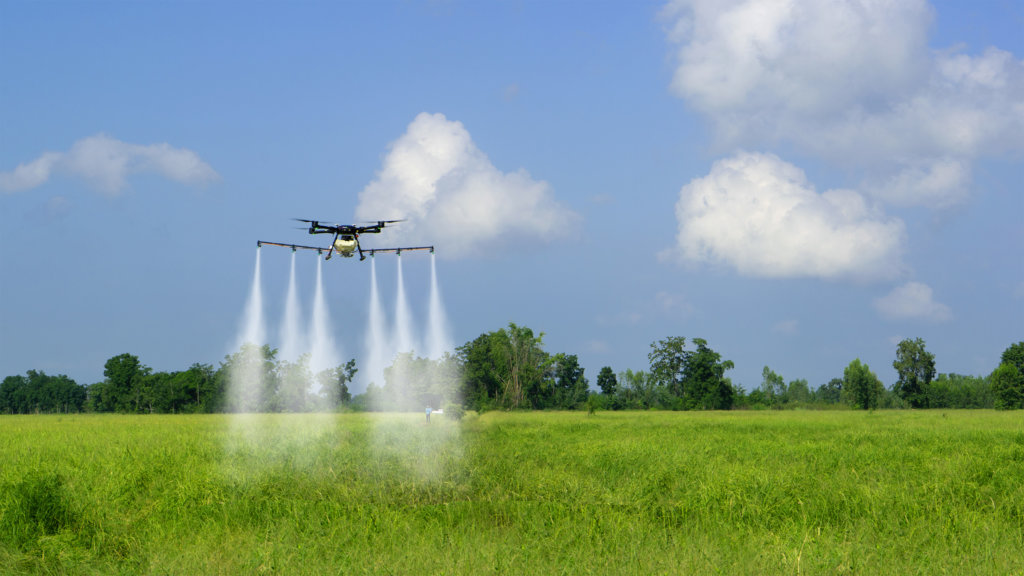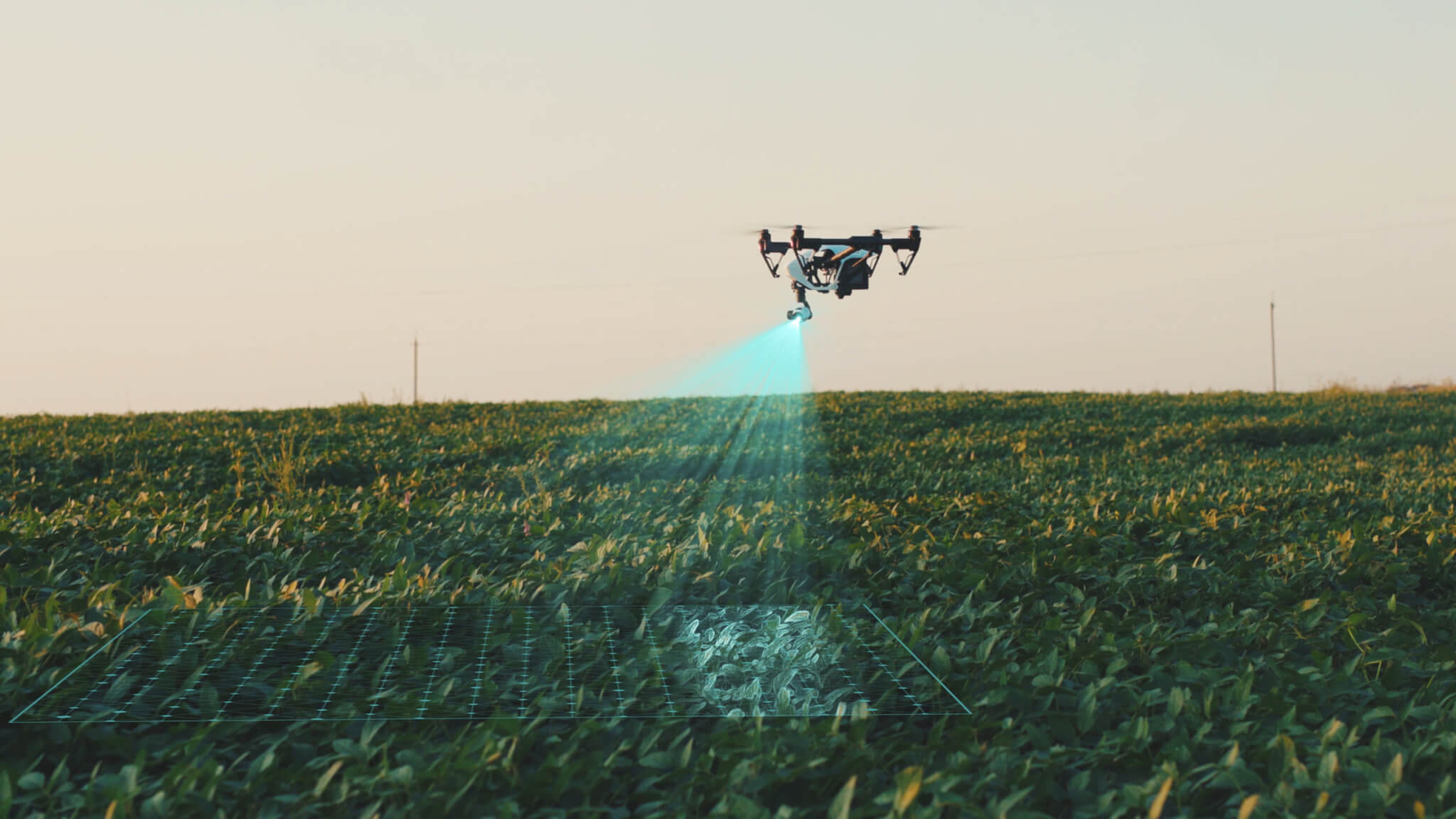As the global population continues to rise year after year, agriculture providers are being forced to rethink how they grow and manage crops. According to one study, global food demand could rise between 59 percent and 98 percent by 2050—a significant increase that will have a major impact on the agriculture industry.
With this in mind, one strategy that has been receiving considerable attention recently is precision agriculture. And unmanned aerial vehicles—or drones—have a vital role to play in this process.
What Is Precision Agriculture?
In short, precision agriculture is an emerging methodology that involves using sensors and analytics tools to strategically rotate crops and plant them in more efficient ways.
Through precision agriculture, growers can potentially increase crop yields and reduce water, pesticide, and fertilizer consumption. Precision agriculture can also make farming more sustainable, successful, and profitable—mutually benefitting providers and growers.
What Role Do Drones Play in Precision Agriculture?
While precision agriculture offers enormous potential benefits for farmers, there is one catch. In order to be effective, precision agriculture needs a steady amount of data. And this is where drones come into play.
More and more agriculture providers are using drones to monitor crops and collect data. Drones can observe large volumes of land and give growers the useful insights they need in order to navigate changing environmental conditions and maximize output.
Here are a few ways that agriculture providers are using drones to streamline operations.
Drones can observe large volumes of land and give growers the useful insights they need in order to navigate changing environmental conditions and maximize output
Planting
Drones are highly effective at collecting metrics such as land elevation and slope. Farmers can study this data over time and use the information to discover where to plant before the start of each growing season.
Irrigation Planning
Crops depend heavily on irrigation functioning properly. As such, farmers need to carefully plan irrigation systems and analyze water distribution to track effectiveness.
Drones can help farmers gain fresh insights into irrigation systems, helping them monitor effectiveness and make strategic changes to improve water movement.
Resource Distribution
Crops can be highly complex, and growing requirements can vary due to slight differences in soil, sunlight, and temperature.
Farmers can use drones to track crop fertility and observe exactly where to apply resources like fertilizer and pesticides. Using this data, it’s possible to achieve greater consistency and maximize production.
Security
Farmers need to keep a close eye on crops to prevent issues like theft and damage from people and wildlife. However, this is no easy task—especially when managing hundreds or thousands of acres of land at a time.
To make security easier, a growing number of farmers are now turning to surveillance drones that can cover large areas and fly for long periods at a time. Drones can capture detailed aerial footage and get close to unauthorized individuals. They can also communicate with security systems and wildlife deterrence systems to help catch intruders in their tracks.
Tracking Sustainability Efforts
Farmers are facing rising scrutiny from government agencies, watchdog groups, and consumers to grow more sustainably and reduce environmental harm. As such, farmers need to back up sustainability efforts with actual data. This is critical for demonstrating compliance.
With this purpose in mind, drones can collect information and provide accurate records for issues like water consumption and crop rotation. By making this type of data available, farmers can have an easier time partnering with eco-conscious distributors. This can potentially lead to better reviews, more recommendations, and higher profits.

Benefits of Precision Agriculture Drones
Without a doubt, drones can have a significant impact on farming operations, making them a key technology to watch out for. Drones can help farmers modernize their operations and manage crops more effectively.
To that end, using drones can lead to a number of benefits for agricultural providers, which we’ll examine here.
Lower Costs
Farming is very costly, with top expenses including fuel, oil, water, electricity, rent, and insurance. For this reason, farmers usually operate on tight budgets and often have to rely on loans and grants to get by. There is no room for wasteful spending.
While drones require capital investment, they are relatively low maintenance, making them an affordable—and very useful—accessory for any serious farming operation. By using drones, farmers can carefully track resource distribution and avoid wasting precious resources.
Reduce Truck Rollouts
Farmers can use drones to efficiently transport products and supplies. This can help reduce reliance on trucks, leading to lower fuel costs and carbon production.
In addition, drones can reach places where trucks can’t travel. To illustrate, imagine a team picking vegetables in the middle of a large field. Workers can use drones to transport items at the exact picking location. This can also reduce hauling, which saves time and energy while boosting productivity.
Optimize Crop Yield
Growers today need to track a variety of metrics like chemicals per output, yield per plant, water per output, and estimated production potential. However, this can be very difficult—especially for smaller operations with limited workers. Farmers often struggle to find the time to devote to tracking analytics.
By using drones and farming software, farmers can automate data collection and receive powerful insights. Using this data, it is possible to optimize crop yield.
Using data collected by drones, it is possible to optimize crop yield
Improve Worker Safety
Worker safety needs to be top of mind for farmers. After all, workers are the most important asset in a farming operation. They are necessary for planting, maintaining, and harvesting crops. Without workers, a farm can’t function.
To that end, agriculture providers need to go above and beyond to protect workers and ensure their safety. Farming can be risky, especially in areas with extreme weather conditions like heat, lighting, and tornadoes. By using environmental sensors and drones, farmers can stay on top of rapidly shifting weather conditions and avoid dangerous and life-threatening situations.
For example, farms can use drone-enabled temperature sensors to remind workers to hydrate and seek shelter during times of peak sunlight. Sensors can also help determine when a dangerous storm that might bring flooding or excessive wind is approaching.
Respond to Disasters
Agricultural disasters can stem from a variety of different issues, including fire, flooding, land movement, and drought. Farmers need to have systems in place to identify disasters when they occur and to respond quickly to mitigate damage.
Drones can assist before, during, and after disasters, giving farmers advanced data to plan and respond to incidents whenever they occur. For example, farmers may use drones after a fire or flood to assess damage over a large area and then plan an appropriate response. This can be useful for gathering information on areas that are not safe to traverse on foot or by motor vehicle.
Survey Land
Land management is one of the most challenging aspects of farming. After all, farmers need to keep careful track of shifting topography and borders to avoid encroaching on nearby land. This is important for avoiding zoning penalties, lawsuits, and angry neighbors.
By using drones, farmers can keep close tabs on their properties as they change over time. Drones are easier, more accurate, and more cost-effective than traditional surveillance technologies like crewed aircraft and satellites.
How Iris Automation Enables Commercial Drone Operations
Iris Automation is changing the way commercial operators across all industries manage and deploy drones.
By using Iris Automation, companies can expand their drone operations by going beyond visual line of sight (BVLOS), enabling them to send drones over greater distances.
To learn how Iris Automation is helping various industries, check out our use cases.

